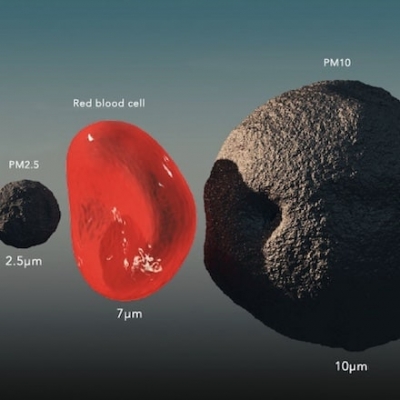
PM 2.5 refers to a category of particulate pollutant that is 2.5 microns or smaller in size. The average cross-section of a human hair is 50 microns. PM stands for “particulate matter.” The EPA and many health organizations categorize particulate matter by size because different size particles have different health effects. For instance, PM 10 particles (particles less than 10 microns in size) can irritate your nose and eyes, but fewer of these particles penetrate deep into your lungs, so they do not cause the same health problems that smaller micron particles can, although they do increase rates of respiratory disease
PM 2.5 particles are complex because they can be made up of numerous types of chemicals and particles, and they can be partly liquid, as opposed to solid, like a common dust particle. Particulate pollutants that are entirely or partly made up of liquid droplets are known as an aerosol. Natural kinds of aerosols include dust, sea salt and volcanic ash, whereas man-made sources include factory and auto emissions, coal combustion and biomass burning for clearing land or farming.
Picture Credit : Google




